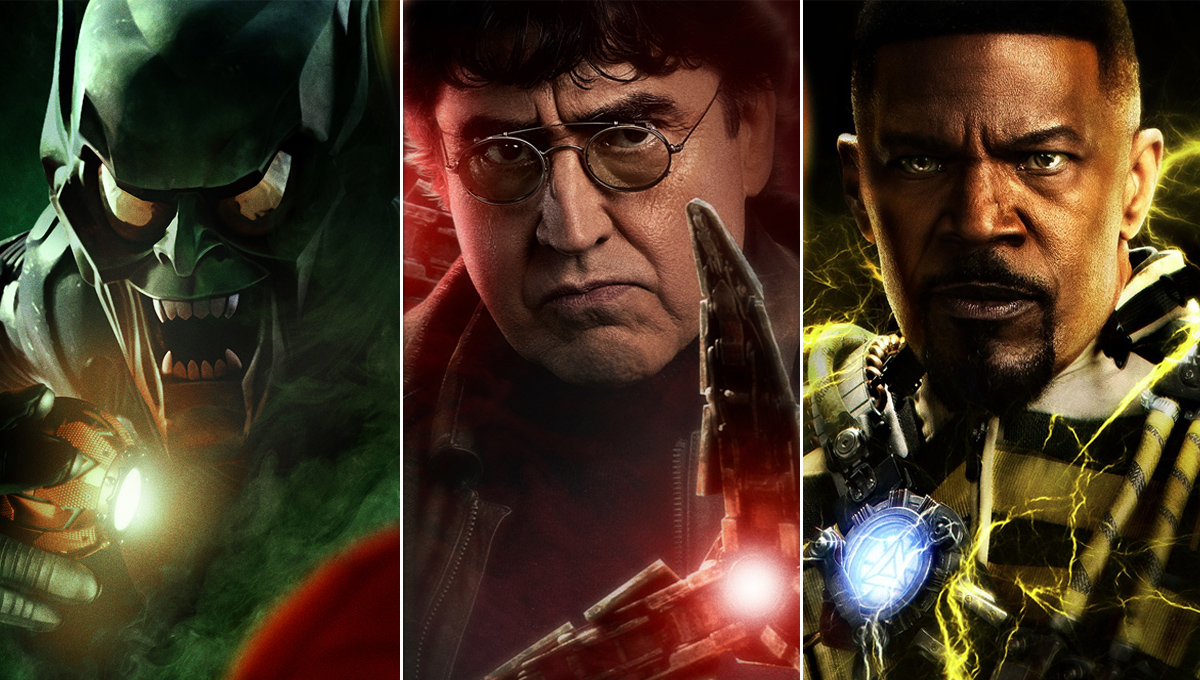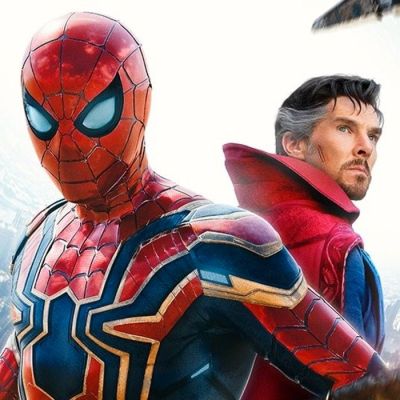Spider-Man: No Way Home has been teasing a universe-crossing cavalcade of supervillains, all of whom have been the center of serious questions set to be answered upon the film’s release next week. Interestingly enough, it appears that a potentially crucial detail has been divulged in advance about these Marvel Cinematic Universe-exiled remnants of previous movie iterations, notably the motivation for the chaos they’re causing. Indeed, said details come straight from returning cast members Willem Dafoe, Alfred Molina and Jamie Foxx.
Of course, this past summer’s first proper trailer for Spider-Man: No Way Home finally confirmed the long-speculated notion of Dafoe back in his main antagonist role from 2002’s Spider-Man as Norman Osborn, a.k.a. the Green Goblin, and Molina reprising his role in 2004’s Spider-Man 2 as Otto Octavius, a.k.a. Doctor Octopus, with even more villains like Foxx’s Max Dillon, a.k.a. Electro from 2014’s The Amazing Spider-Man 2 revealed in later clips. While a botched Doctor Strange spell is the clear catalyst for the crossover, we’ve still been left to wonder why the other-universe arrivals are wreaking havoc. Well, new comments from a recently-released official villains cast members sit-down with Dafoe, Molina and Foxx seemingly provide intriguing answers.
“Doc Ock picks up where he left off [in Spider-Man 2], says Molina. “He’s looking for revenge.”
Molina’s comment might seem innocuous, but it’s quite revelatory. While the idea adheres to the already-known notion of the villains being whisked away from their respective movie universe deaths while battling their respective versions of Spider-Man, it confirms that they are essentially living ghosts, locked in a perpetual state of motivation from their final deeds, regardless of the passage of time (which, in the MCU, is actually five years ahead of us, due to the Blip). In the case of Doc Ock, he was sent to the MCU from 2004 during his climactic Spider-Man 2 plan for explosive vengeance on his version of New York City with a weaponized version of the same experimental fusion reactor tech that accidentally fused evil A.I. robotic arms to his spine, and created his conflicted madness-suffering hybrid personality. Indeed, this idea is complemented by a movie clip, in which a befuddled Doc Ock asks Tom Holland’s Spider-Man, “What have you done with my machine?”
Comments from Foxx regarding the mindset of Electro further drive home the idea of the villains being living and breathing versions of vengeful spirits. For him, a vengeance-driven motivation also stems from the circumstances of his circuit-channeling metamorphosis in The Amazing Spider-Man 2, in which he started as meek, nerdy Oscorp engineer Spider-Man-obsessive Max Dillon, and accidentally becomes a living generator, on whom the company forced torturous experiments. Thus, the suffering and unfulfilled life of Max is the metaphorical conduit for a destructive personality discharge, which, once turned against Andrew Garfield’s Wall-Crawler, will be unleashed in the MCU against Holland’s version.
“We got another chance to stir some things up,” explains Foxx. “Electro is like, ‘The world did me wrong.’ And now I got this energy, I’m about to go get mine.”
Read more
Foxx intriguingly implies that Electro has obtained a new kind of energy, which might reference the still-speculated idea that the familiar-looking centerpiece of his chest harness is holding the late Tony Stark’s crucial invention, an Arc Reactor, a nigh-unlimited power source that would be a catastrophic upgrade for the spark-powered villain. This idea is driven home with a movie line from Foxx’s revitalized version of Electro, exclaiming, “How do you like the new new?” Indeed, said line might be a bit of braggadocio about how the Stark-built super-battery not only upgraded his arsenal, but possibly provided enough power to alter his formerly bald and blue disfigured appearance. Pertinently, another showcased scene has Electro further exclaim in a moment of defiance, “You’re not going to take this away from me.”
Dafoe also provided some insight into the mindset of Norman Osborn/Green Goblin, albeit to a lesser extent, stating, “The Goblin believes in a world of losers and winners. Power is all that matters.” However, of this triumvirate of villains, the Goblin’s beef with Tobey Maguire’s Spider-Man has always been the most personal, especially once he learned of his quarry’s true identity of Peter Parker, the best friend of his beloved-but-emotionally-abused son, Harry. Thus, it will be interesting to see if any of that enmity is carried over in his battles against Holland’s version, who may or may not have some familiarity with the man, perhaps from retconned MCU encounters set before his Captain America: Civil War debut. Yet, if anything, the clip does seem to tacitly confirm that the Goblin we’ve seen flying on his glider mask-less, covered with a hood, is indeed Norman — and not, say, James Franco’s Harry as Spider-Man 3’s would-be family redeemer, New Goblin.
However, mystery still clouds the motivations of other confirmed villain returnees, Thomas Haden Church’s Flint Marko/the Sandman from 2007’s Spider-Man 3 and Rhys Ifans’s Curt Connors/the Lizard from 2012’s The Amazing Spider-Man, and neither actor was present on the panel. We can take that to mean that their roles are smaller than we think or that Sony/Marvel is still trying to keep a tight lid on more secrets. After all, the widely-believed notion of former Spider-Men Tobey Maguire and Andrew Garfield surfacing in the MCU film still resides in the realm of speculation. Plus, given the multiverse-related development in Venom: Let There Be Carnage‘s post-credits scene, a certain symbiote-joined would-be-rival played by Tom Hardy might also be lurking in the corner.
Regardless, the booming business of speculation is about to come to a close, and the answers for which fans have long-sought are imminent—for better or worse—when Spider-Man: No Way Home swings its way to what already appears to be a bellwether post-pandemic box office performance on December 17.


